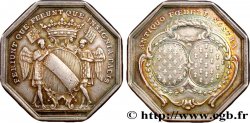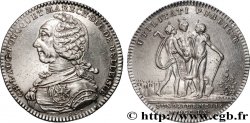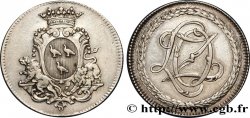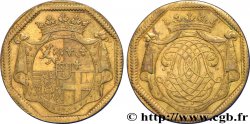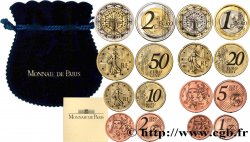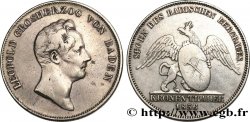Zurück 1/1
fjt_1015303 - BRETAGNE (NOBLESSE DE...) MEREAU RELIGIEUX DE BRETAGNE 1720
150.00 €
Menge
In den Warenkorb

Type : MEREAU RELIGIEUX DE BRETAGNE
Datum: 1720
Metall : Silber
Durchmesser : 23,5 mm
Stempelstellung : 12 h.
Gewicht : 4,58 g.
Rand lisse
Punze : sans poinçon
Seltenheitsgrad : R2
Kommentare zum Erhaltungszustand:
Belle patine grise hétérogène, présentant quelques points d’oxydation. Aspect légèrement irisée
N° im Nachschlagewerk :
Vorderseite
Titulatur der Vorderseite EX AUGUSTIIS GLORIA SUR LA BANDEROLLE.
Beschreibung Vorderseite Croix ancrée et renversée sur un écu semé d’hermines, posé sur un manteau, au-dessus une colombe à gauche.
Rückseite
Titulatur der Rückseite HANC ETIAM MAUCENAS ASPICE PARTEM PORRO HOC EST NECESSARIUM 1720.
Beschreibung Rückseite En six lignes au-dessous une hermine.
Übersetzung der Rückseite Tourne tes regards, Mécène, de ce côté.
Kommentare
Feuardent classe ce jeton comme méreau religieux de Bretagne, sans plus de précision. Pour lui, la version en cuivre est d’époque la frappe en argent une refrappe postérieure. Ceci semble bizarre car la date très tardive du méreau pourrait laisser penser que la frappe a eu lieu en argent. En 1720, un jeton était soit utilitaire et en cuivre, personne ne pouvant penser ultérieurement en faire une refrappe, soit en argent, surtout pour un faible diamètre.
La formule du revers provient des Géorgiques de Virgile (4e, vers 2) et la référence à Mécène est étrange pour un jeton religieux.
Feuardent classifies this token as a religious token from Brittany, without further details. For him, the copper version is from the period of the silver strike, a later re-strike. This seems odd because the very late date of the token could suggest that the strike took place in silver. In 1720, a token was either utilitarian and made of copper, no one could think of re-strike it later, or in silver, especially for a small diameter. The formula on the reverse comes from Virgil's Georgics (4th, verse 2) and the reference to Maecenas is strange for a religious token
La formule du revers provient des Géorgiques de Virgile (4e, vers 2) et la référence à Mécène est étrange pour un jeton religieux.
Feuardent classifies this token as a religious token from Brittany, without further details. For him, the copper version is from the period of the silver strike, a later re-strike. This seems odd because the very late date of the token could suggest that the strike took place in silver. In 1720, a token was either utilitarian and made of copper, no one could think of re-strike it later, or in silver, especially for a small diameter. The formula on the reverse comes from Virgil's Georgics (4th, verse 2) and the reference to Maecenas is strange for a religious token








 Berichten über einen Fehler
Berichten über einen Fehler Die Seite drucken
Die Seite drucken Teilen meiner Auswahl
Teilen meiner Auswahl Stellen Sie eine Frage
Stellen Sie eine Frage Einlieferung/Verkauf
Einlieferung/Verkauf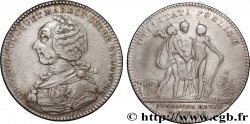
 Details
Details